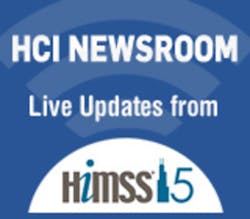Having been in healthcare publishing for over a quarter century now, I have been hearing literally for decades about the “coming” revolution in patient focus in healthcare. I’ve observed and reported on the “patient-centered care revolution” in the 1990s—which, unfortunately, devolved into rather small-bore efforts (well-intentioned, of course) to empower nurses. I’ve observed and reported on patient-centered medical homes, a very worthy model of care innovation that continues to evolve forward, albeit with needed tweaks. And I’ve observed and reported on healthcare futurists’ pronouncements—over literally 25-plus years now—about the coming age of the empowered healthcare consumer.
Yet all along, it has felt as though many in healthcare, both on the provider (hospital and medical group) and health insurer sides of the industry, there has been lingering, unspoken skepticism, even cynicism, about the extent to which things would fundamentally change going forward. Certainly until recently, provider executives and clinician leaders have carried on as though nothing was really going to change, even as everyone mouthed the same platitudes they’d been mouthing for decades now.
And yet, and yet—things actually are now changing. With the entire U.S. healthcare industry about to sail right over a cost cliff (viz., the Medicare actuaries’ predictions last fall that total U.S. healthcare spending would explode from about $3 trillion and change right now to over $5 trillion in the next decade, and as a result, a variety of mandates from the federal government, as expressed through the Affordable Care Act, the Medicare and Medicaid programs, and the HITECH Act (per automation), we as an industry no longer have the luxury to go on as though nothing is happening.
So it was immensely heartening and fascinating to report Monday morning on the results of the 26th Annual HIMSS Leadership survey, during the HIMSS Conference, being held at the McCormick Place Convention Center in Chicago. And that’s because this year’s HIMSS Leadership Survey found that healthcare IT senior executives’ top two business priorities, tied at 87 percent, were improving patient satisfaction and enhancing patient engagement.
What’s more, CMIOs and CIOs assembled on a panel at the HIMSS Leadership Survey press briefing this morning all confirmed that indeed, improving both patient satisfaction and patient engagement really are top of mind of them these days. As Paul Kleeberg, M.D., CMIO of the Bloomington, Minn.-based Stratis Health and clinical director for the Regional Extension Assistance Center for HIT (REACH), a REC serving Minnesota and North Dakota, put it, “I think what’s really driving that [survey result] is the Stage 2 requirements to get patients engaged and achieve 5 percent patient engagement according to that meaningful use measure, which I think is a good thing. It’s raising awareness,” he added.
And William W. Feaster, M.D., CMIO at CHOC Children’s Hospital, Orange, Calif., added, with regard to the connection between patient engagement and population health, that his organization is involved in a concerted push around both. “Our focus right now is really what this survey is saying,” he said. Importantly, he noted that "We’re not going to improve the health of populations unless we can engage patients. It’s a bit easier as a children’s hospital, because what parent isn’t engaged in the health of their child?” Nonetheless, he noted, patient engagement (which in his children's hospital's pediatric context often means parent engagement), is a concept that requires a complex set of strategies, tools, and processes to actually execute on in real life.
Broadly speaking, of course, the fact that the entire industry is being compelled forward into population health management and accountable care, while having to accept that many employer-purchasers are pushing many of their employees into high-deductible health plans, is a major factor in all this and something that simply cannot be denied.
Even so, it is heartening that at last, healthcare senior leaders’ perceptions of the world are changing as had long been predicted, and even more importantly, that CIOs, CMIOs, and other senior healthcare IT executives, along with their clinician leader and administrative executive colleagues, are actually beginning to change how they do business going forward. Because really, we’ve been hearing the patient engagement/patient satisfaction/engaged healthcare consumer speeches and predictions for quite a long time now. So this feels a bit like the flowering of a plant that has spent a tremendously long time growing roots underground before it finally emerged into the sunlight of day.


